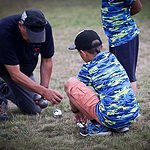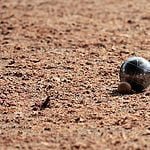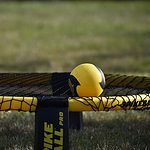In pickleball, a hindrance is any disruption caused by external factors like stray balls or insects, stopping play momentarily for fairness and affecting focus and performance. Addressing hindrances promptly is vital to maintain gameplay quality and competitive advantage. Strategies must adapt to overcome obstacles and prevent unfair advantages. Mastering footwork, positioning, and reaction time enhances overall performance on the court. Consistent practice and skill development are key to minimizing errors and improving gameplay. Understanding and managing hindrances effectively contribute to a smoother and more successful pickleball experience. Further insights await on how to navigate hindrances and optimize your game.
Definition of Pickleball Hindrance
The definition of a pickleball hindrance is any temporary element that disrupts gameplay, excluding interference from a teammate or opponent. Hindrances can make it challenging to play at your full ability, hindering your focus and performance on the court.
In pickleball, hindrances like balls entering your court from another game, flying insects buzzing around, or players on adjacent courts causing distractions can interrupt the flow of play. When a hindrance occurs, play must stop, and the point is replayed to guarantee fairness and maintain the integrity of the game.
Your ability to concentrate and execute shots can be greatly affected by these disruptions, emphasizing the importance of the hinder rule in pickleball. Remember, any player can call a hinder during a game, leading to a temporary pause in play, while in officiated matches, the referee also has the authority to make a hinder call, emphasizing the significance of managing hindrances to promote safe and focused gameplay.
Impact of Hindrances on Gameplay
Hindrances in Pickleball have significant implications for gameplay. When distractions like balls from other courts or flying insects disrupt your focus, your performance can be compromised.
Strategies may need to be adjusted swiftly to navigate these challenges and maintain your competitive edge.
Game Disruption Effects
Players in Pickleball may find their gameplay disrupted by various hindrances, impacting their focus and ability to maintain the flow of the game. External factors such as balls from other games, flying insects, or foreign material on the court can all contribute to these disruptions.
When faced with hindrances, players must rely on the referee's judgment to navigate the situation effectively. The referee plays an essential role in evaluating the impact of the hindrance and ensuring fair play by enforcing the rules consistently.
Addressing these disruptions promptly is important to prevent any significant interruptions and maintain the competitive nature of the game. By understanding how hindrances can affect gameplay and having clear protocols in place, players can minimize the disruptions and keep the game running smoothly.
Player Performance Affected
Amidst the fast-paced gameplay of pickleball, distractions caused by hindrances can greatly affect your performance on the court. These hindrances can impact a player's ability to play in a distracting manner, interfering with the opponents. When hindered by external factors, your focus and rhythm may be disrupted, leading to errors, missed shots, and a general decrease in gameplay quality. Managing these distractions effectively is essential for maintaining consistency and competitiveness during matches. By recognizing and addressing hindrances promptly, you can better prepare yourself mentally and physically to perform at your best on the pickleball court.
| Hindrance Impact on Player Performance | |
|---|---|
| Loss of focus | Errors |
| Disrupted rhythm | Missed shots |
| Decreased gameplay quality | Competitive disadvantage |
Strategies Altered Due
Getting through hindrances in pickleball demands quick thinking and adaptability to adjust your strategies effectively during gameplay. When faced with obstacles, such as unexpected movements or noise distractions, your planned strategies may need to be altered on the spot.
These hindrances can impact your ability to execute shots as intended, leading to a shift in positioning or timing to compensate. The adverse effects of hindrances on play can be significant, disrupting the flow of the game and requiring you to stay focused amidst the challenges.
Common Hindrances in Pickleball
Common obstacles in Pickleball present challenges that can disrupt the flow of the game and require quick resolution to maintain fairness and focus among players. These common obstacles, such as balls from other games landing on your court, flying insects, distractions from adjacent courts, players stepping onto your court during play, and debris flying onto the court, can adversely impact play by causing a dead ball, play stoppage, and potentially a point replay.
When an obstacle occurs, it's vital to address it promptly to avoid unfair advantages or safety risks. Obstacles are subjective and should be determined with input from teammates and opponents. Any player can call an impediment, leading to a dead ball. In officiated matches, the referee also has the authority to make an impediment call.
The purpose of the impediment rule in Pickleball is to uphold fair play, maintain safety, and sustain a focused environment for all players involved. By promptly resolving common obstacles, the game can proceed smoothly, maintaining integrity and enjoyment for all participants.
Strategies to Address Hindrances
Addressing hindrances effectively in pickleball requires players to promptly identify and call out any transient elements that may impact gameplay. Hindrances can come in various forms, such as a ball rolling onto the court or a sudden noise disrupting play. When these hindrances occur, it's essential to address them to maintain fairness and sportsmanship.
One strategy to address hindrances is to hit a hinder if you believe something is interfering with your or your opponents' concentration or ability to play effectively. By acknowledging and calling out hindrances promptly, you can prevent them from affecting the outcome of the game. Additionally, understanding the official hindrance rule and utilizing the judgment of the referee can help in determining the severity of the hindrance and its impact on the game.
Dealing With Footwork Challenges
To navigate footwork challenges effectively in pickleball, mastering proper techniques is essential for enhancing your on-court performance. When facing footwork challenges, incorporating split steps into your gameplay can greatly improve your ability to respond swiftly to your opponents' shots.
Additionally, maintaining a balanced stance throughout the game enhances your agility and readiness to move in any direction on the court. Engaging in specific footwork drills can further elevate your speed, agility, and overall court coverage, allowing you to reach more shots effectively.
Overcoming Positioning Issues
Finding the right positioning in pickleball demands a vital awareness of both court boundaries and your opponent's positioning to ensure smooth gameplay and effective shot execution. Proper positioning is paramount not only to avoid interference with your partner but also to anticipate your opponent's shots effectively. By understanding your opponent's ability and concentration levels, you can adjust your positioning to prevent hindrances during rallies. It's essential to communicate effectively with your partner and adapt your positioning based on the game situation to maintain a strong defensive and offensive stance.
Being mindful of your partner's positioning can help prevent situations where a player adversely impacts the game due to improper positioning. By maintaining good court awareness and reacting promptly to your opponent's shots, you can navigate positioning issues and enhance your overall performance on the court. Remember, the key to overcoming positioning issues is to stay agile, communicate with your partner, and adjust your position dynamically throughout the game.
Importance of Proper Reaction Time
Developing sharp reaction time in pickleball is essential for staying ahead of the game and maximizing your performance on the court. Your reaction time, which encompasses quick reflexes and anticipation skills, plays a pivotal role in your ability to respond effectively to your opponent's shots. By honing your reaction time, you can position yourself ideally on the court, anticipating where the ball will go and ensuring you're in the right place at the right time.
Having quick reflexes allows you to react promptly to fast-paced rallies and unexpected shots, giving you a competitive edge. Additionally, anticipation skills enable you to read your opponent's movements and predict their next move, helping you strategize and counter their plays effectively. Proper positioning, coupled with swift reaction time, can significantly enhance your overall performance in pickleball matches.
To improve your reaction time, practice drills and gaining match experience are key. By staying focused, alert, and actively working on your reflexes, you can elevate your game and become a more formidable opponent on the pickleball court.
Improving Performance Through Practice
To enhance your pickleball skills, focus on consistent practice routines to build muscle memory and refine your shots.
By targeting specific skills like volleys and serves through structured drills, you can address weaknesses and elevate your game.
Repetition is crucial to mastery, so make sure you dedicate time to perfecting footwork patterns and adapting to various playing styles with different partners.
Consistent Practice Routines
Engaging in consistent practice routines in pickleball is vital for enhancing your on-court performance through improved muscle memory and reflex development. By practicing regularly, you can improve your concentration to hit precise shots, enhance your ability to hit various shots effectively, and refine your overall gameplay.
Consistent practice allows you to work on your footwork, positioning, and shot selection, reducing errors during matches. Focusing on drills like serves, volleys, and dinks helps in boosting accuracy and control on the court. Additionally, honing specific skills such as third shot drops and lobs through repetitive practice can greatly enhance your overall game.
Targeted Skill Development
Improving your pickleball performance through targeted skill development requires a focused approach on specific aspects of your game. By honing in on particular skills, you can enhance your overall gameplay and overcome hindrances that may impede your progress on the court.
Here are some key strategies to contemplate:
- Practicing specific shots to enhance accuracy and power.
- Working on footwork to boost your movement and positioning.
- Developing strategies to outsmart opponents and capitalize on opportunities.
- Analyzing game situations to make effective decisions in real-time.
Engaging in targeted skill development can greatly boost your performance by refining your physical actions and minimizing any factors that could otherwise interfere with your progress.
Repetition for Mastery
Practicing specific skills repetitively in pickleball is a fundamental approach to mastering techniques and enhancing overall performance on the court.
Consistent repetition of shots and movements not only improves muscle memory but also enhances consistency in your gameplay.
By dedicating time to repetitive practice, you can explore further into the intricacies of pickleball, leading to a higher level of proficiency.
Mastery in pickleball is achievable through continuous practice and repetition, enabling you to better anticipate your opponents' moves and react effectively to any distractions caused by a player, such as foreign material on the court.
Conclusion
To sum up, maneuvering obstacles in pickleball is like gliding through a minefield – demanding swift footwork, precise positioning, and lightning-fast reactions.
By tackling common hurdles and practicing diligently, players can enhance their performance and conquer any challenges that come their way on the court.
Keep moving, stay focused, and remember that every obstacle is just another opportunity to showcase your skills and determination.
Keep playing, keep improving, and keep enjoying the game!





